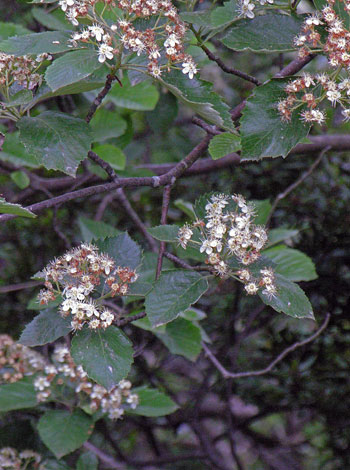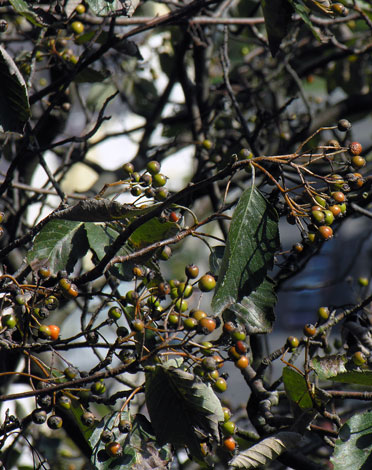Sorbus croceocarpa Orange-fruited Whitebeam I


This introduction is often planted in parks and gardens and from there escapes into the wild. It is one of the Sorbus genus which can become a large tree - up to 21m in this case.
A member of the Latifolia aggregate which are characterised by orange or brown fruits, this tree has leaves with 9 to 11 occasionally 8 pairs of veins.
The leaves are mostly ovate (oval but widest nearest the base), elliptic (widest in the middle) or occasionally obovate (egg shaped with the narrow end near the petiole or stalk). The base is usually broadly rounded and the edge of the leaf has shallow teeth. In the latifolia group this tree has leaves with the least well defined lobes - which means you wouldn't consider it lobed at all really.
The orange fruits have numerous little white scabs called lenticels all over them and have a bigger equatorial diameter than polar. The origin of this introduction to the UK is unknown.
There isn't much of this tree about in these islands but the highest concentration is in the North West of England with a few outposts in Scotland and Wales and very little in Ireland.
This particular tree had been believed to be a native tree Sorbus devoniensis the majority of which unsurprisingly grow in Devon. For many years people have recorded this tree as S. devoniensis and today it still appears in the BSBI maps and lists as that. The identification was corrected recently by Tim Rich and confirmed by Peter Sell.
The Great Orme: Flowers on 27th May; Fruit on 15th Sept 2006
Added on 15th September 2006, modified 9th January 2007, updated 10th February 2012



